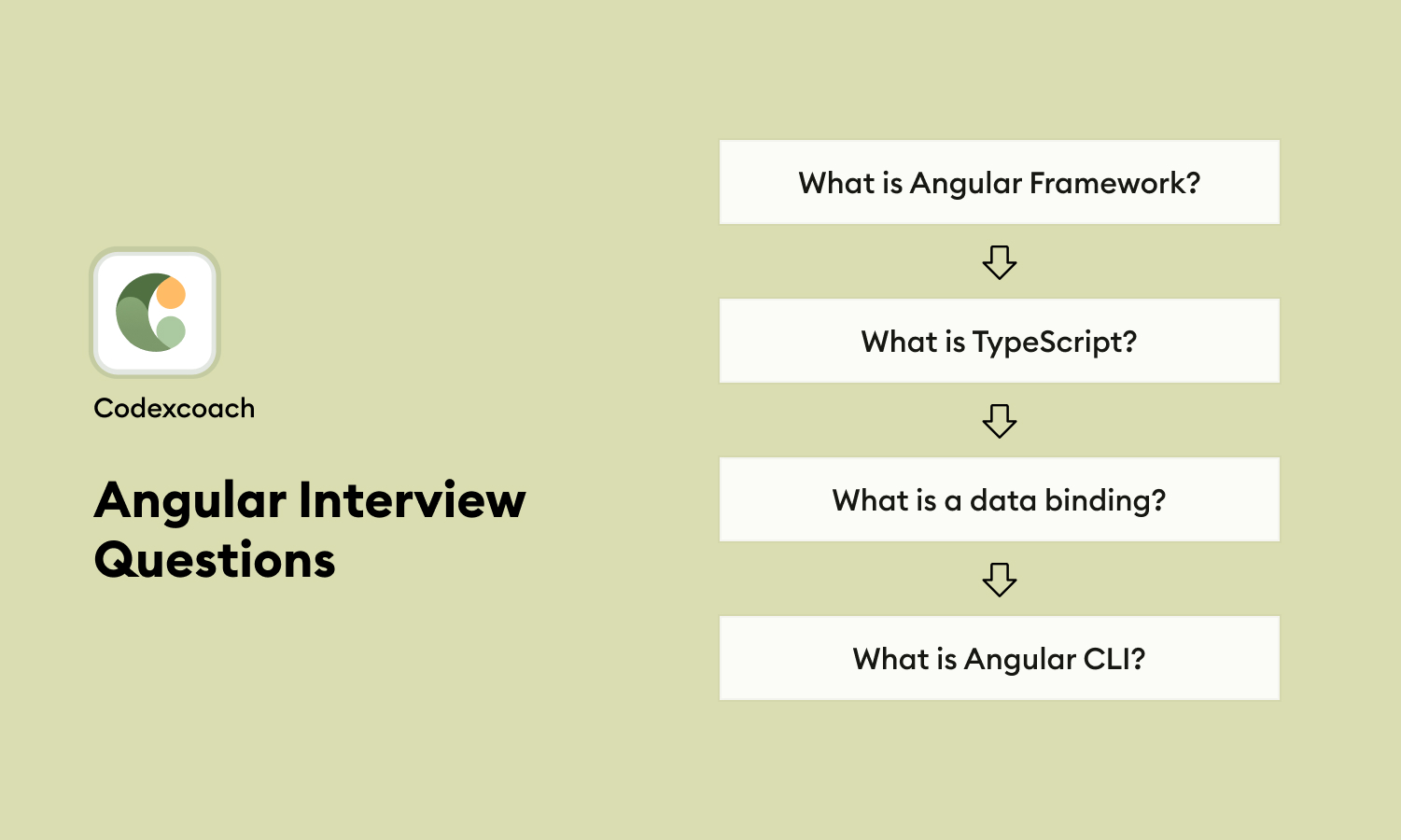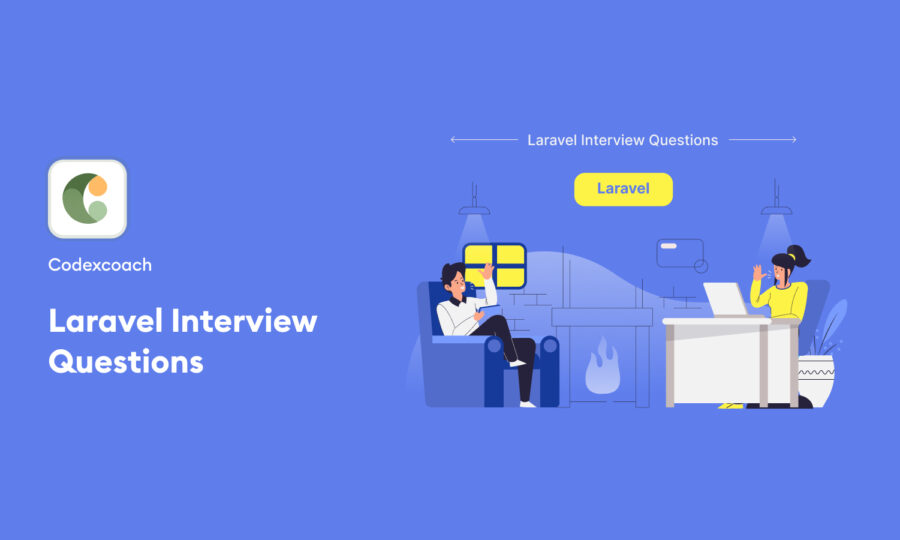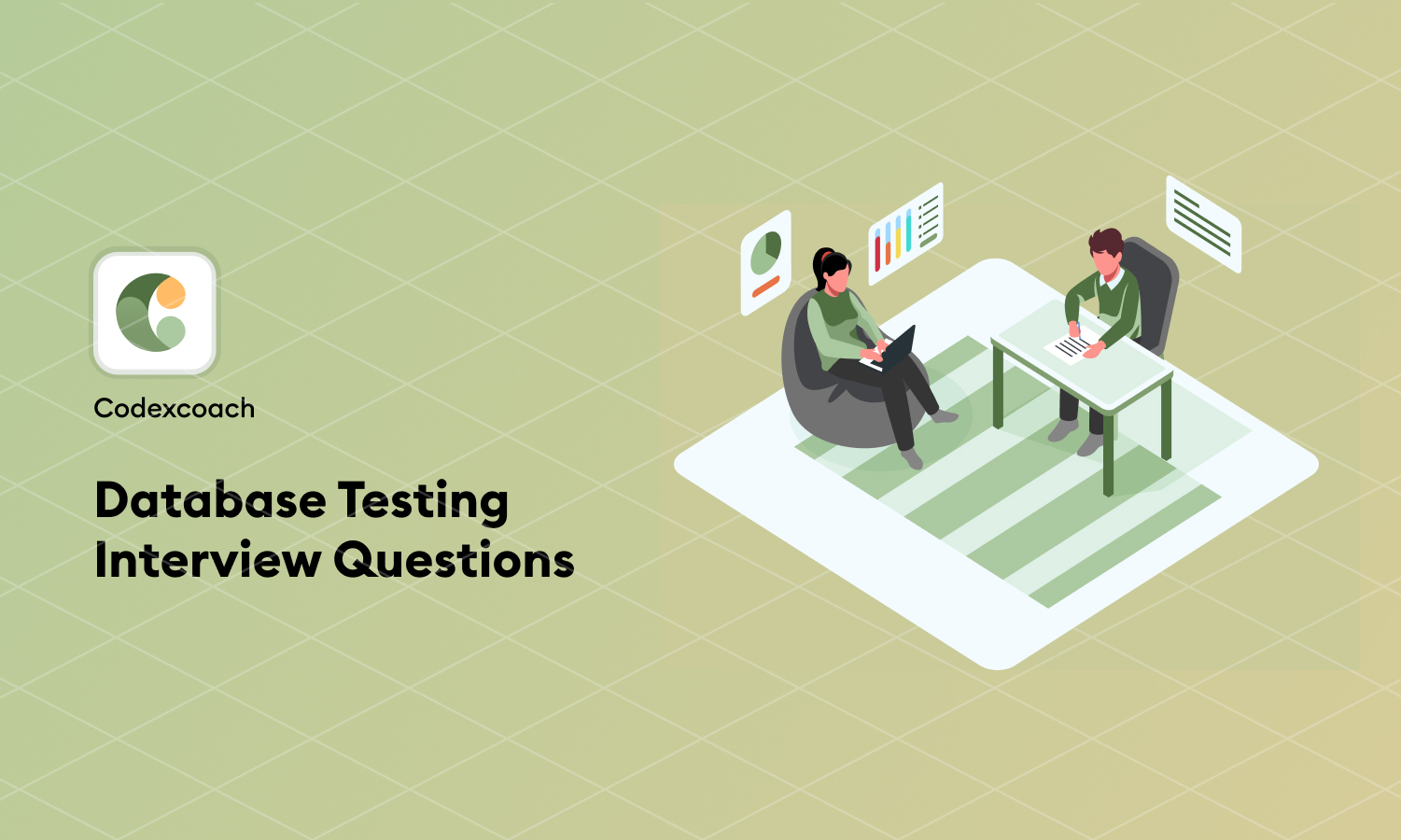Angular Interview Questions for Freshers
1. What is Angular?
Angular is a JavaScript framework developed by Google for building web applications. It is primarily used for building single-page applications (SPAs) and is known for its robustness, modularity, and reusability.
2. What is TypeScript?
TypeScript is a superset of JavaScript that adds static typing to the language. It is the primary language for Best Angular development.
3. What are Single Page Applications (SPAs)?
SPAs are web applications that load a single HTML page and dynamically update content as the user interacts with the app.
4. What is Data Binding?
Data Binding is the synchronization of data between the model and the view.
Components and Directives
5. What is a Component?
A component is a building block in an Angular application. It consists of a template, a class containing logic, and metadata.
6. How do you create a component in Angular?
You can create a component using the Angular CLI command ng generate component or manually by creating a class and decorating it with @Component.
7. What are Directives?
Directives are used to manipulate the DOM or to add behavior to elements in the DOM.
8. Can you name a few built-in Directives?
Some built-in directives are ngIf, ngFor, and ngSwitch.
Services and Dependency Injection
9. What is a Service?
A service is a class that provides some sort of functionality that can be reused across components.
10. What is Dependency Injection?
Dependency Injection is a technique where Angular provides dependencies to different parts of your application, like components and services.
Routing and Navigation
11. What is Routing?
Routing is the mechanism by which Angular navigates between different components based on the browser’s URL or user actions.
12. What is a Route Guard?
Route Guards are interfaces that can tell the Angular router to allow or disallow access to a route.
13. What is ‘RouterOutlet’?
RouterOutlet is a directive from the router library that acts as a placeholder where the routed component should be displayed.
14. How do you navigate between routes?
You can navigate between routes programmatically using Angular’s Router service or declaratively using the syntax.
Forms and Validation
15. What are Template-driven Forms?
Template-driven forms are simpler and are created by declaring the form and its controls directly in the HTML template.
16. What are Reactive Forms?
Reactive forms are more scalable and created programmatically in the component class. They offer more control over validation and other form behaviors.
Angular CLI
17. What is Angular CLI?
Angular CLI (Command Line Interface) is a tool that helps you to initialize, develop, and maintain Angular applications.
18. How do you create a new Angular project using the CLI?
You can create a new project using the command ng new project-name.
Basic Debugging
19. How do you debug an Angular application?
Angular applications can be debugged using browser development tools, Angular DevTools, or by adding breakpoints in the code.
20. What is a common cause of the “Expression has changed after it was checked” error?
This error usually occurs when the value of a property changes after Angular’s change detection has already evaluated it.
Basic Questions
21. What are the Components in Angular?
Components are the building blocks of an Angular application. They consist of a template, a class that contains logic, and metadata that defines how the component interacts with the view.
22. What is the difference between ‘ngOnInit’ and ‘constructor’?
constructor is a default method in a TypeScript class, called when the class is instantiated. ngOnInit is a lifecycle hook in Angular, called after the first ngOnChanges.
23. What are Observables and Promises?
Observables are lazy collections of multiple values over time. Promises handle a single event. Observables are more powerful and flexible but can be more complex.
24. Explain Lazy Loading.
Lazy loading is a technique where Angular only loads components as they are needed, improving startup time.
25. What are Angular Modules?
Angular modules are classes adorned with @NgModule decorator, used for organizing components, directives, and services.
Advanced Questions
26. How do you optimize Angular applications?
Some techniques include using the ChangeDetectionStrategy. OnPush strategy, employing lazy loading, and utilizing Ahead-of-Time (AOT) compilation.
27. What are Decorators?
Decorators are special functions that modify JavaScript classes and properties. They are heavily used in Angular for things like defining components and injecting services.
28. How do you handle state management in Angular?
State management can be handled via various methods including services, RxJS, or state management libraries like NgRx or Akita.
Angular Interview Questions for Experienced
Architecture and Design Patterns
29. Explain the concept of Angular Modules (NgModules).
Angular Modules help in organizing an application into cohesive blocks of functionality. They act as a container for a closely related set of capabilities.
30. What is a Lazy-Loaded Module and why would you use it?
Lazy-loaded modules are Angular modules that are loaded on demand rather than during the initial bootstrap process. They help improve startup performance.
31. What is Zone.js?
Zone.js is a library that provides a mechanism to manage asynchronous operations in Angular.
32. Explain the role of Zone.js in Angular.
Zone.js is a library that provides execution contexts for JavaScript, and it helps Angular to get updated about asynchronous operations, facilitating change detection.
Advanced Component Interaction
33. What are @Input and @Output decorators?
@Input allows data to flow from a parent component to a child component, and @Output allows data to flow from the child back to the parent via events.
34. What are ViewChild and ViewChildren?
ViewChild and ViewChildren are decorators used for accessing child elements within a component’s view.
35. How do you use ViewChild and ContentChild?
ViewChild is used to access a child component, directive, or DOM element from the parent component class. ContentChild is used to access content that is projected into a component.
36. What is Content Projection?
Content Projection is a way to import HTML content from outside the component and insert that content into the component’s template at a designated ng-content slot.
Reactive Programming and State Management
37. Explain Observables and Subjects in RxJS.
Observables are lazy event streams that can emit multiple values over time. Subjects are both Observables and Observers and can multicast events to multiple listeners.
38. How do you handle state management in a large Angular application?
You can use state management libraries like NgRx, and Akita, or even handle it manually using services and RxJS Observables to manage complex application states.
39. What are Higher-Order Observables and how do you handle them?
Higher-order observables are Observables that emit other Observables. They are usually managed using operators like switchMap, mergeMap, and concatMap.
Performance Optimization
40. How does Angular’s Change Detection work and how can you optimize it?
Angular’s default change detection mechanism checks each component whenever an event that could change the state occurs. You can optimize it using strategies like ChangeDetectionStrategy.OnPush.
41. What is Angular Universal and how does it improve performance?
Angular Universal is a server-side rendering (SSR) solution that renders Angular applications on the server, improving first-page load time and SEO.
Testing and Debugging
42. How do you unit test Angular components?
Unit tests in Angular are commonly written using testing frameworks like Jasmine and test runners like Karma. Angular’s TestBed provides a way to create and manage test environments for components.
43. What are some common debugging techniques in Angular?
Common debugging techniques include using Angular DevTools, browser developer tools, and using debugging keywords like debugger in TypeScript code.
44. How do you mock dependencies in Angular tests?
Angular provides TestBed for configuring modules and injecting mock services, and you can also use Jasmine’s spyOn function to mock methods and properties.
Angular-Based Interview Questions
45. How do you make HTTP requests in Angular?
Angular’s HttpClient is commonly used to make HTTP requests. It returns an Observable that you can subscribe to.
46. What is Interceptor?
Interceptors allow you to intercept HTTP requests and responses to transform or handle them before passing them along.
47. What is FormGroup and FormControl?
FormGroup is a collection of FormControl instances. It allows you to manage a group of form controls.
48. How do you test Angular components?
You can use Angular’s testing utilities along with Jasmine and Karma to write unit tests for Angular components.
49. What is TestBed?
TestBed is an Angular testing utility that allows you to create an Angular testing module where you can instantiate components and services.
50. What is the AOT Compilation?
Ahead-of-time (AOT) compilation converts your Angular HTML and TypeScript code into efficient JavaScript code before the browser downloads and runs it.
51. How do you create a custom directive?
To create a custom directive, you define a class and decorate it with the @Directive decorator.
52. What is NgZone?
NgZone is a wrapper around Zone.js that provides a way to execute code inside or outside Angular’s change detection mechanism.
53. What is the difference between the async pipe and the subscribe method?
Async pipe subscribes to an Observable or Promise and returns the latest value it has emitted. subscribe method is more explicit and gives you more control but requires manual subscription management.





